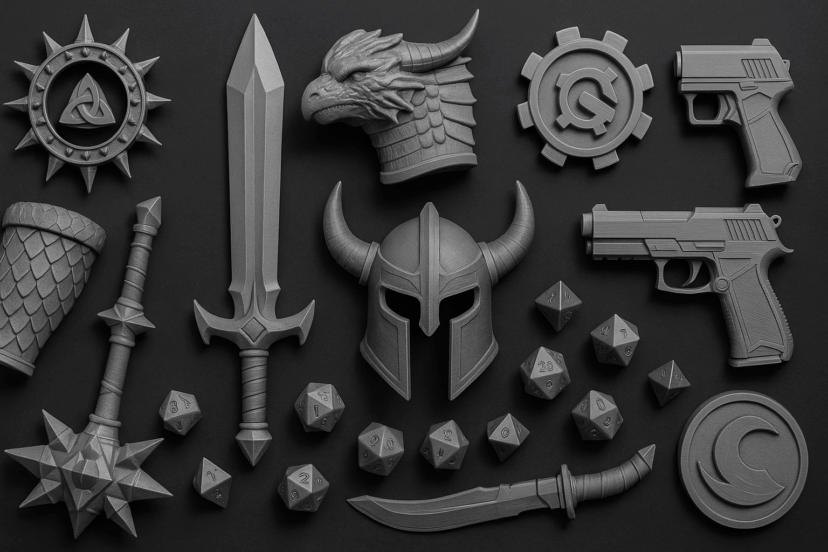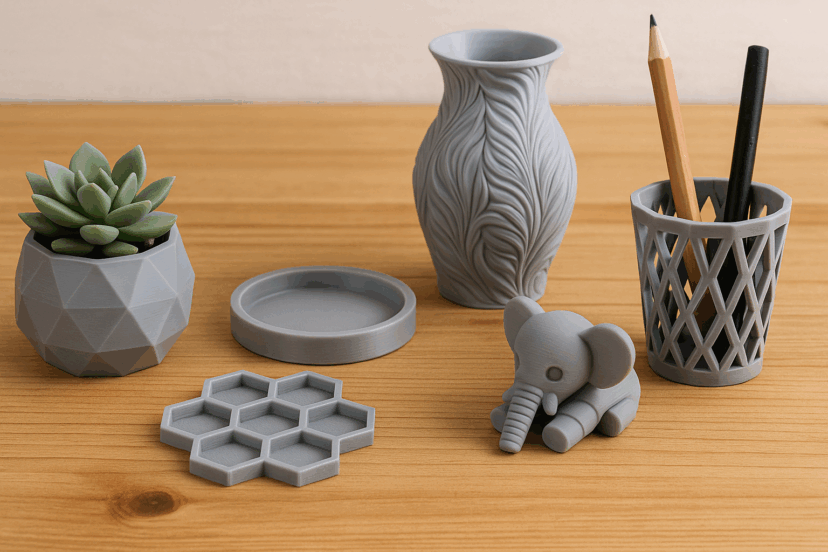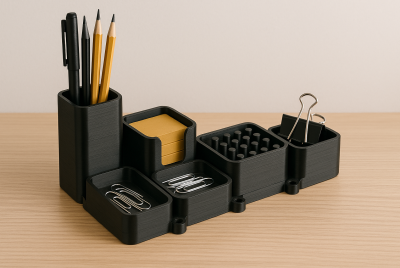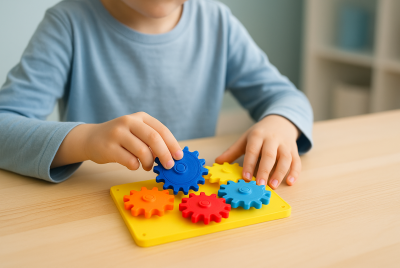How To Start Selling 3D-Printed Products On Etsy
Are you looking to make a living off of your hobby of 3D printing? Etsy might be the key to your success. This guide will assist you in making the leap, regardless of whether you have been playing with fun designs or have recently opened your first printer. You’re printing opportunities rather than just stuff. Let’s take a step-by-step look at how to begin selling 3D-printed products on Etsy.
Why Etsy Is Perfect for 3D-Printed Products
Etsy offers more than just old clothes and handmade jewelry. It is a maker’s and inventor’s playground. Your 3D-printed products have a good chance of being noticed by an audience that is already drawn to unique, creative goods.
If you’re diving into the world of selling 3D-printed products on Etsy, it’s helpful to understand both the creator economy and Etsy’s advertising ecosystem. A fascinating study on monetizing 3D design explores how 3D printing creators are generating income by selling physical products and offering exclusive content online. Meanwhile, Etsy’s own research into its platform, particularly through an analysis of Etsy’s promoted listings, reveals how click-through rate predictions influence product visibility and ad success—key insights for sellers aiming to scale.
Start with the Right Mindset
Etsy selling is a marathon, not a race. Consider it similar to planting a tree. Sales are the fruit that finally grows from the seed you sow (your store), tend to (marketing, customer service). Have patience, maintain your curiosity, and never stop learning.
Choose a Niche You Love (And That Sells)
This is where things get fun—and strategic. Instead of printing random trinkets, think about what problems your products solve. Do you want to focus on home décor, gaming accessories, cosplay props, or organizers?
Ask yourself:
- What do I enjoy making?
- What do people often need that can be 3D printed?
- What are other shops doing—and how can I do it differently?

Understand Etsy’s Rules on 3D Printing
Etsy allows 3D-printed items as long as they’re designed by you or someone on your team. That means no selling downloaded files unless you have the rights to them. Keep things original, and you’ll stay in Etsy’s good graces.
Design or Download Your Models (Legally)
If you’re into CAD and enjoy designing from scratch—great! You’re already ahead. But if not, you can legally purchase or download models that allow for commercial use. Just double-check the licensing before you hit “print.”
Invest in a Reliable 3D Printer
Your printer is your workhorse. Choose one that matches your product goals. Small, detailed items? Look for precision. Larger pieces? Focus on build volume.
Remember: a glitchy printer is like a chef with a broken stove.
Dial In Your Settings Before Selling
Before you list anything, make sure your prints are top-quality. Layer height, infill, supports—these little tweaks make a big difference. Test prints help you catch issues early.
Think of it like baking. You wouldn’t sell cookies from a recipe you haven’t tried, right?
And don’t forget maintenance—keeping your equipment in top shape matters. A clean nozzle can be the difference between a flawless finish and a failed print. Check out this handy guide on 3D printer nozzle cleaners to keep your setup running like new.
Post-Processing Matters
Raw prints are okay, but finished ones? That’s where the magic happens. Sanding, painting, and even adding felt or resin can elevate your product. Customers love a clean, polished look—and they’ll pay more for it.
Take Great Product Photos
Etsy is a visual marketplace. Shoppers scroll fast, so your photos need to stop them in their tracks.
Use natural lighting, plain backgrounds, and multiple angles. If your product is functional, show it in action. You’re not just selling a thing—you’re selling a vibe.

Write Listings That Speak to Humans (and Algorithms)
Your titles, tags, and descriptions matter. Use clear, descriptive language, and include words buyers would use when searching.
But don’t just stuff keywords—write like you’re explaining it to a friend. Highlight features, benefits, size, materials, and how your item will make life easier or cooler.
Price for Profit (Without Scaring Buyers Away)
Pricing can be tricky. You want to cover your costs—filament, time, electricity, maintenance—and still make a profit. But price too high, and you might lose curious shoppers.
Do some competitor research and find that sweet spot between value and affordability.
Package with Care (and Style)
Your packaging is your first physical impression. A neat, branded package feels professional and thoughtful.
Include a thank-you card or a coupon for their next purchase. It’s a simple gesture that turns buyers into repeat customers.
Set Up Your Etsy Shop Step by Step
- Create an Etsy seller account.
- Choose your shop name—make it memorable.
- Upload your listings with quality images and SEO-optimized descriptions.
- Set your shipping rates and processing times.
- Add shop policies (returns, exchanges, etc.).
Boom—you’re live!
Promote Your Shop Without Feeling Salesy
You don’t need to be a marketing guru. Just show up consistently.
- Post behind-the-scenes on Instagram.
- Share tips or product uses on TikTok.
- Run small Etsy ads to test what works.
Think of it as storytelling. You’re inviting people into your world—not yelling at them to buy.
Ask for Reviews (Politely)
Happy customers often forget to leave reviews—unless you ask. After their item arrives, send a kind follow-up thanking them and gently reminding them to review if they loved the product.
Good reviews build trust. They’re like little digital high-fives from past buyers.
Stay Organized and Scale Smart
Use spreadsheets or apps to track orders, inventory, and expenses. As you grow, you might want to batch print or outsource tasks like design or customer service.
Scaling doesn’t mean losing the personal touch—it means freeing up time to focus on your strengths.
Be Ready for Questions and Custom Orders
Etsy buyers love personalization. Stay responsive to messages and be flexible where it makes sense. Clear, friendly communication sets you apart.
Sometimes a single message can turn a casual browser into a loyal fan.
Learn from Every Sale (or Non-Sale)
Each listing is a mini experiment. What worked? What didn’t? Keep testing and tweaking. Success isn’t linear—it’s a loop of trying, learning, and improving.
Must-Have Products for Selling 3D Prints on Etsy
Ready to turn your 3D printing into profit? These five essentials will help you produce high-quality items and run your Etsy shop smoothly:
- Reliable 3D Printer – Start with a dependable printer suited to your product type. FDM printers are great for larger, functional items, while resin printers work best for fine details.
- High-Quality Filament – The better your filament, the better your print. Choose reputable brands that offer consistent quality and vibrant colors to avoid weak or warped prints.
- Post-Processing Tools – Sandpaper, precision knives, or resin curing lamps help turn rough prints into polished products buyers love.
- Digital Calipers – Precision matters. Use these to ensure your prints match design specs—especially important for custom-fit items.
- Professional Packaging Supplies – Sturdy boxes, bubble wrap, and branded inserts make your unboxing experience memorable and boost customer satisfaction.
These tools lay the foundation for a professional, efficient Etsy shop that shoppers can trust.
Conclusion
Starting your Etsy journey might feel like standing at the base of a mountain. But every shop started with one listing, one photo, and one sale. Keep climbing. With consistency, creativity, and care, you can turn your passion into a business that truly prints possibilities. So, go ahead, follow this guide, and sell 3D-printed products on Etsy now!
FAQs
1. Can I sell 3D prints from files I found online?
Only if you have commercial rights to those files. Always check the license and terms to avoid copyright issues.
2. What are the best-selling types of 3D-printed items on Etsy?
Popular items include home organization tools, planters, cosplay gear, tabletop gaming accessories, and unique décor pieces.
3. Are Business Licenses Required for Etsy Shops?
It depends on your local laws. In many places, you can start as a sole proprietor, but it’s smart to check with your local business regulations.
4. How do I deal with failed prints or returns?
Factor in a margin for errors. For returns, have a clear policy. Many sellers offer refunds or replacements depending on the issue.
5. Can I scale this into a full-time income?
Yes, many have. Success depends on quality, consistency, marketing, and evolving your offerings. Start part-time, and scale as you grow.




